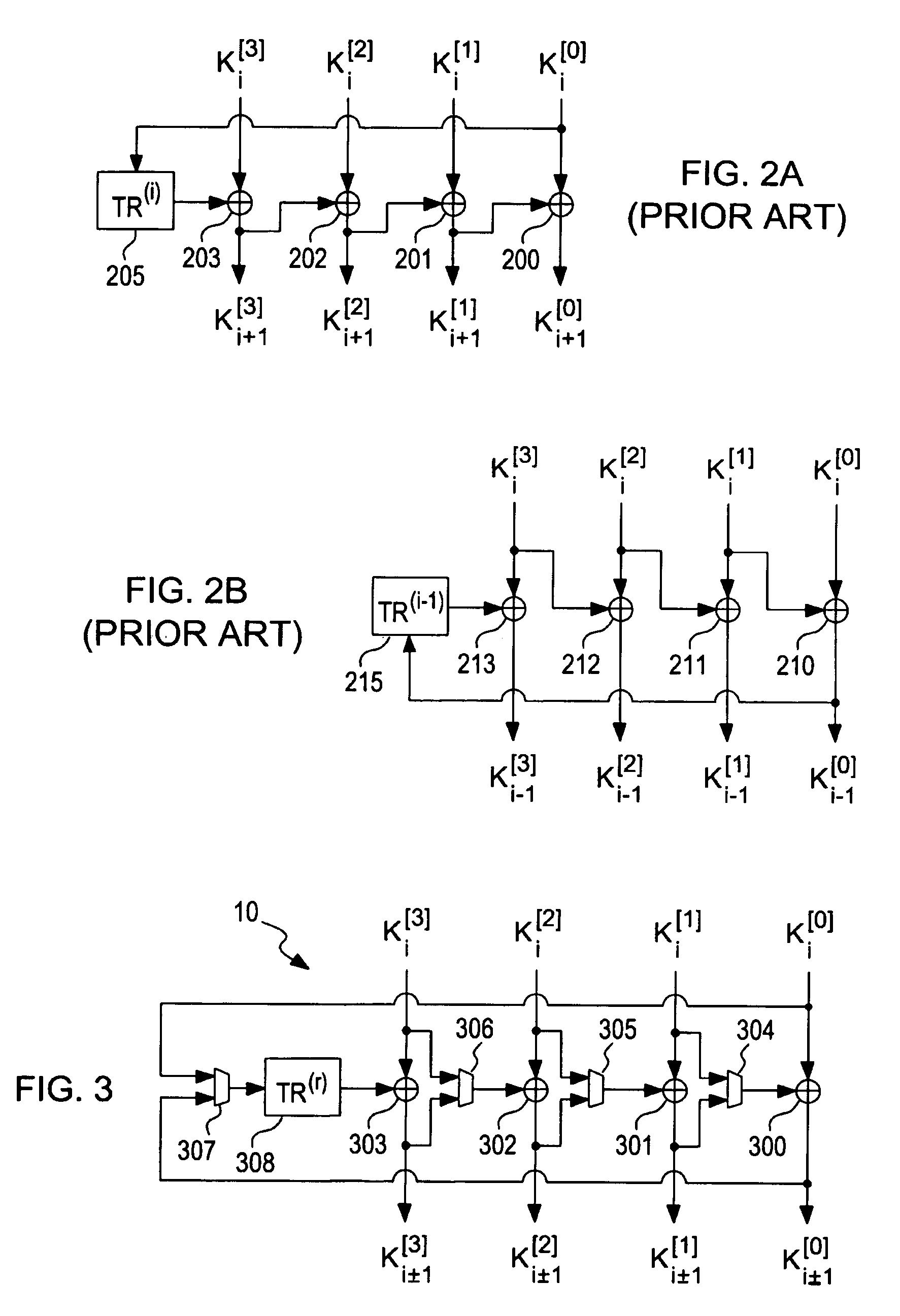Apparatus and method for key scheduling
a key scheduling and key technology, applied in the field of key scheduling, can solve the problems of hardware implementation, cost, implementation, etc., and achieve the effect of solving the problem of hardware implementation of rijndael block that is not yet satisfactory, and the method described abov
- Summary
- Abstract
- Description
- Claims
- Application Information
AI Technical Summary
Benefits of technology
Problems solved by technology
Method used
Image
Examples
Embodiment Construction
[0025]The following terms are defined as follows:
stretched key—a new key obtained utilizing the key expansion process, or by utilizing the inverse key expansion process.
“backwards”—when a key is stretched to obtain a previous Round Key, i.e., Ki−1=f(Kl).
“forwards”—when a key is stretched to obtain the next Round Key, i.e., Ki+1=f(Ki).
[0026]The AES algorithm consists of a predetermined number of rounds, each of which requires a unique Round key. In this process the actual key is “stretched” and transformed to yield a plurality of Round keys which are required for the block ciphering / deciphering processes in each round.
[0027]The Round keys generation process is known as key expansion. FIG. 2A is a block diagram illustrating a conventional Key expansion operation as known in the art. The new Round key Ki+1 is computed from the four 32-bit portions of the previous Round key Ki, wherein the key portions Ki[j] (i=0, 1,2,3) are used to compute the four key portions of the new Round key Ki+...
PUM
 Login to View More
Login to View More Abstract
Description
Claims
Application Information
 Login to View More
Login to View More - R&D
- Intellectual Property
- Life Sciences
- Materials
- Tech Scout
- Unparalleled Data Quality
- Higher Quality Content
- 60% Fewer Hallucinations
Browse by: Latest US Patents, China's latest patents, Technical Efficacy Thesaurus, Application Domain, Technology Topic, Popular Technical Reports.
© 2025 PatSnap. All rights reserved.Legal|Privacy policy|Modern Slavery Act Transparency Statement|Sitemap|About US| Contact US: help@patsnap.com



